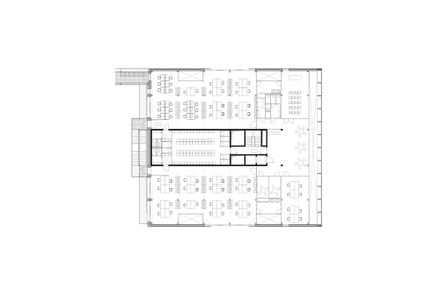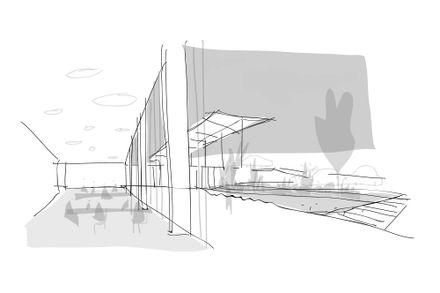
Buda Recypark Industrial Center
ARCHITECTS
Atelier 229, Evr-architecten
DESIGN — PROJECT LEADER
Renaud Van Espen — Atelier 229
DESIGN
Manu Heytens, Dimitri Duysburgh, Dennis Schouwers, Marieke De Ridder — Evr-architecten
PROGRAM / USE / BUILDING FUNCTION
Redevelopment Of Buda Industrial Site, New Sorting Center, Offices The Site Includes: Logistics Halls And Sorting Center: For Waste Management And Sorting. Social Building: With Offices, Changing Rooms And Staff Canteen. Parking Lot: For Parking And Maintaining Vehicles. Container Park: Recycling Site Accessible To The Public.
STABILITY
Stabilis
TECHNIQUES
Istema
SUSTAINABILITY
Evr-architecten
YEAR
2024
LOCATION
Brussels, Belgium
CATEGORY
Industrial Architecture
Text description provided by architect.
The new logistics site of the Agence Bruxelles Propreté/ Agentschap Net Brussel located along the Brussels Canal near the Buda Bridge, embodies a harmonious fusion of functionality, sustainability, and aesthetics.
This project revitalises an underutilised area into a modern logistics hub while perfectly integrating with its urban environment.
THE SITE IS ORGANISED INTO FOUR DISTINCT STRIPS
A "Hard" strip: Designed for trucks, including parking, washing, and inspection areas.
"Building" strip: A unique volume visible from the canal, housing the central building and logistics halls.
"Green" strip: A green axis including water management elements and serving as a green filter, extending towards the canal into a public esplanade.
Recycling Centre (PAC) strip: A separate and publicly accessible area with separated traffic flows.
The logistics halls and the sorting center are dedicated to waste management and sorting. A designated parking area is intended for the parking and maintenance of vehicles. Additionally, the recycling centre (PAC) serves as a recycling area accessible to the public.
The social building houses: offices, changing rooms, and a canteen for staff, providing a functional and comfortable environment. The site's architecture enhances employee well-being.
The interior spaces are bathed in natural light, ensuring superior visual, acoustic, and thermal comfort. The widespread use of wood and the quality of indoor air were prioritized, offering a healthy and pleasant working environment.
In this project, preference was given to local and renewable materials, respecting the principles of the circular economy. The choice of a wooden construction reduces the ecological footprint and ensures flexibility and adaptability in the future thanks to the modular design.
The dry construction method used minimises disruption on site, optimises natural resources and facilitates dismantling and recycling at the end of its life.
Short supply chains were chosen as much as possible throughout the project. For example, thousands of m3 of soil from earthworks were transported by sea via the canal and materials were transported by boat.
The standard elements used for the industrial hall make it easy to adapt the structure in the future, by adding additional bays. A demolition inventory was also made to encourage the reuse of materials and equipment via reuse channels.
A "box-in-a-box" system was introduced for the sorting cabin, offering maximum flexibility to relocate or replace this activity without the need for major renovation.
In the container park there is a recycling centre, which offers space for the recovery of goods that can still be used, in this way they can be reintegrated via channels for reuse.
This sustainable project will be the reference for all future construction and renovations of the Brussels Network Agency.
































